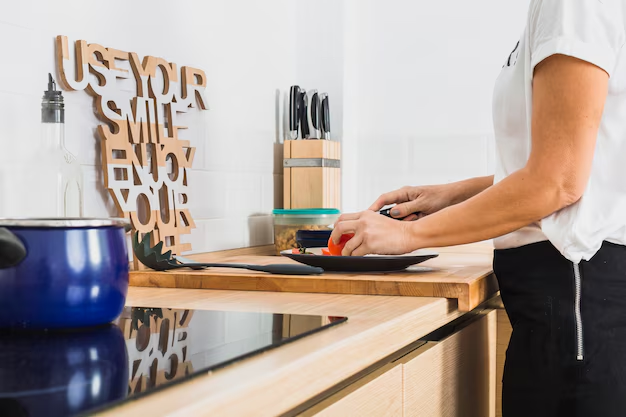Crafting Your Own Mini Refrigerator: A Step-by-Step Guide
When imagining a mini refrigerator, it's common to picture compact convenience packed with energy efficiency. Whether you're a DIY enthusiast looking to embrace creativity or someone seeking functionality in small living spaces, building a mini refrigerator is both a rewarding and practical endeavor. This guide will walk you through the process of building your own mini fridge, discussing essential considerations and offering practical tips to ensure success.
Why Build a Mini Refrigerator?
The Appeal of DIY
Constructing a mini refrigerator from scratch presents a variety of appeals:
- Customization: Tailor it to your specific size and design preferences.
- Learning Experience: Gain hands-on knowledge in refrigeration and electronics.
- Cost Efficiency: Potentially more budget-friendly than purchasing a ready-made unit.
These factors make DIY refrigerators an attractive project for hobbyists and those on a budget.
Functionality and Usage
Mini refrigerators serve numerous purposes:
- Compact Spaces: Perfect for dorm rooms, offices, and small apartments.
- Energy Efficiency: Reduces energy consumption compared to larger units.
- Portable Option: Ideal for camping trips or mobile living situations.
Key Components of a Mini Refrigerator
Creating a mini fridge requires understanding the core components involved in refrigeration:
Thermoelectric Module
Often preferred in DIY projects, the thermoelectric module (also known as a Peltier cooler) is a pivotal element. When electrically powered, it transfers heat from one side to the other, providing cooling without complex machinery.
Insulation Materials
Effective insulation retains the desired temperature. Commonly used materials include:
- Styrofoam: Lightweight and affordable, offering decent thermal insulation.
- Polyethylene: A durable, flexible option, often placed on floor and walls.
Power Supply
A stable and compatible power source is crucial. Typical choices include:
- 12V Adapters: Standard for smaller Peltier modules.
- Batteries: Suitable for portable designs.
Heat Sink and Fan
Heat dissipation is vital for steady cooling. A heat sink, often paired with a fan, helps disperse excess heat from the thermoelectric module, preventing overheating.
Step-by-Step Guide to Building a Mini Refrigerator
🛠️ Materials and Tools Required
Gathering the right tools and materials is the first step:
- Peltier cooler module
- Heat sink and thermal paste
- Small 12V fan
- Switches and wires
- 12V DC adapter
- Insulation materials (such as Styrofoam)
- Container (e.g., an old cooler or insulated box)
- Basic tools: screwdriver, drill, soldering iron
Building Process
1. Preparing the Container
Select a durable, well-insulated box. Clean and line the interior with additional insulation (like Styrofoam) for enhanced thermal efficiency.
2. Installing the Thermoelectric Module
- Position the Module: Attach it to a small opening on the container's interior.
- Apply Thermal Paste: Spread a thin layer of thermal paste to improve heat transfer from the module to the heat sink.
- Mount the Heat Sink: Secure it against the module on the exterior to aid heat dissipation.
- Fitting the Fan: Position the fan nearby to assist with airflow across the heat sink.
3. Wiring and Power Setup
- Connect the Wires: Set up wiring from the Peltier module to your power source.
- Switch Installation: Add an on/off switch for easy control.
- Secure Power Supply: Connect the setup to a compatible 12V adapter or acknowledge battery power for portability.
4. Testing and Adjustments
Before sealing everything, conduct a test run:
- Monitor Temperature: Ensure cooling functionality meets expectations.
- Check for Efficiency: Evaluate if the insulation holds, modifying as necessary.
- Optimize Fan & Heat Sink: Make sure the system effectively dissipates heat.
Enhancing Performance and Troubleshooting
Tips for Better Efficiency
- Seal Tight: Ensure lids and joints are airtight to retain cooling.
- Optimize Insulation: Increase insulation layers if necessary.
- Temperature Control: Consider adding a thermostat for better regulation.
Common Pitfalls and Solutions
- Overheating: Ensure a robust heat dissipation system with both active and passive cooling methods.
- Inadequate Cooling: Verify the thermoelectric module's capacity aligns with your volume needs.
- Power Issues: Use adequately rated components to prevent burnout or inefficient operation.
Practical Summary for Building Success
Here's a checklist to keep handy as you embark on your mini refrigerator build:
- ⚡ Use Efficient Components: Select the right Peltier and heat dissipation system.
- 🛠️ Prepare Tools & Materials: Gather all components before starting.
- 🔍 Ensure Insulation: Double-check insulation effectiveness for long-term efficiency.
- 🔌 Manage Power Supply: Use reliable connections and switches.
- 🧪 Conduct Tests: Always test before finalizing assembly.
By following this guide, you're on your way to creating a functional and tailored mini refrigerator. Not only does this offer practical utility, but it also provides an engaging project that can inspire further exploration into the realms of DIY electronics and home appliance design. Whether intended for personal satisfaction or practical utility, your mini fridge is just the beginning of a rewarding DIY journey.
